Amit Kumar Singh Yadav
HISPASpoof: A New Dataset For Spanish Speech Forensics
Sep 11, 2025Abstract:Zero-shot Voice Cloning (VC) and Text-to-Speech (TTS) methods have advanced rapidly, enabling the generation of highly realistic synthetic speech and raising serious concerns about their misuse. While numerous detectors have been developed for English and Chinese, Spanish-spoken by over 600 million people worldwide-remains underrepresented in speech forensics. To address this gap, we introduce HISPASpoof, the first large-scale Spanish dataset designed for synthetic speech detection and attribution. It includes real speech from public corpora across six accents and synthetic speech generated with six zero-shot TTS systems. We evaluate five representative methods, showing that detectors trained on English fail to generalize to Spanish, while training on HISPASpoof substantially improves detection. We also evaluate synthetic speech attribution performance on HISPASpoof, i.e., identifying the generation method of synthetic speech. HISPASpoof thus provides a critical benchmark for advancing reliable and inclusive speech forensics in Spanish.
ItDPDM: Information-Theoretic Discrete Poisson Diffusion Model
May 08, 2025
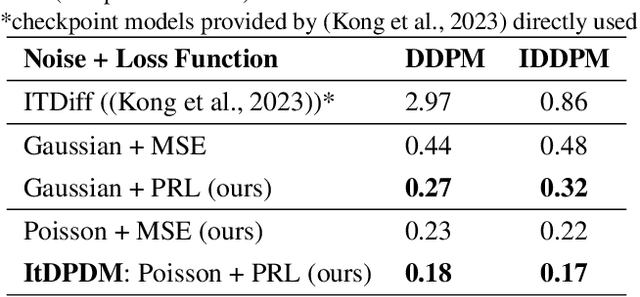


Abstract:Existing methods for generative modeling of discrete data, such as symbolic music tokens, face two primary challenges: (1) they either embed discrete inputs into continuous state-spaces or (2) rely on variational losses that only approximate the true negative log-likelihood. Previous efforts have individually targeted these limitations. While information-theoretic Gaussian diffusion models alleviate the suboptimality of variational losses, they still perform modeling in continuous domains. In this work, we introduce the Information-Theoretic Discrete Poisson Diffusion Model (ItDPDM), which simultaneously addresses both limitations by directly operating in a discrete state-space via a Poisson diffusion process inspired by photon arrival processes in camera sensors. We introduce a novel Poisson Reconstruction Loss (PRL) and derive an exact relationship between PRL and the true negative log-likelihood, thereby eliminating the need for approximate evidence lower bounds. Experiments conducted on the Lakh MIDI symbolic music dataset and the CIFAR-10 image benchmark demonstrate that ItDPDM delivers significant improvements, reducing test NLL by up to 80% compared to prior baselines, while also achieving faster convergence.
Comparative Analysis of ASR Methods for Speech Deepfake Detection
Nov 26, 2024
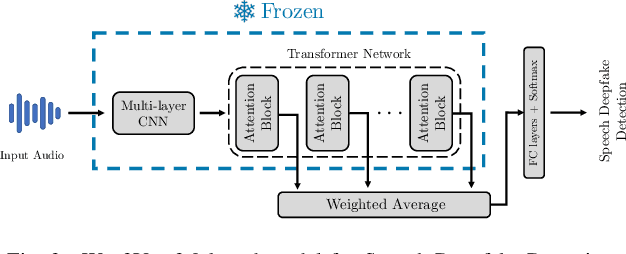
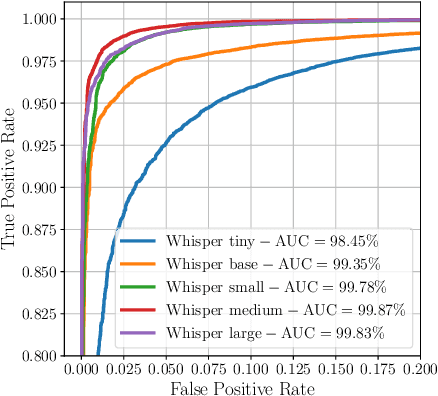
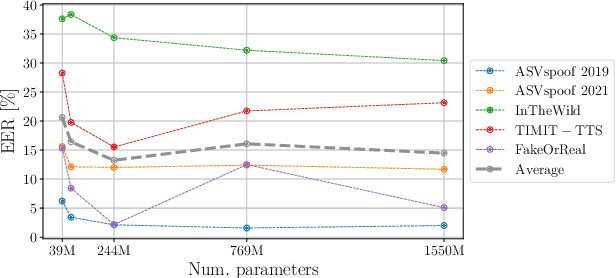
Abstract:Recent techniques for speech deepfake detection often rely on pre-trained self-supervised models. These systems, initially developed for Automatic Speech Recognition (ASR), have proved their ability to offer a meaningful representation of speech signals, which can benefit various tasks, including deepfake detection. In this context, pre-trained models serve as feature extractors and are used to extract embeddings from input speech, which are then fed to a binary speech deepfake detector. The remarkable accuracy achieved through this approach underscores a potential relationship between ASR and speech deepfake detection. However, this connection is not yet entirely clear, and we do not know whether improved performance in ASR corresponds to higher speech deepfake detection capabilities. In this paper, we address this question through a systematic analysis. We consider two different pre-trained self-supervised ASR models, Whisper and Wav2Vec 2.0, and adapt them for the speech deepfake detection task. These models have been released in multiple versions, with increasing number of parameters and enhanced ASR performance. We investigate whether performance improvements in ASR correlate with improvements in speech deepfake detection. Our results provide insights into the relationship between these two tasks and offer valuable guidance for the development of more effective speech deepfake detectors.
FairSSD: Understanding Bias in Synthetic Speech Detectors
Apr 17, 2024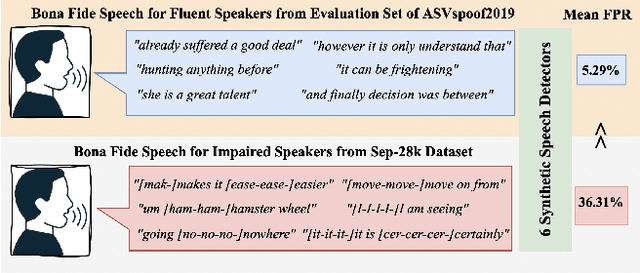
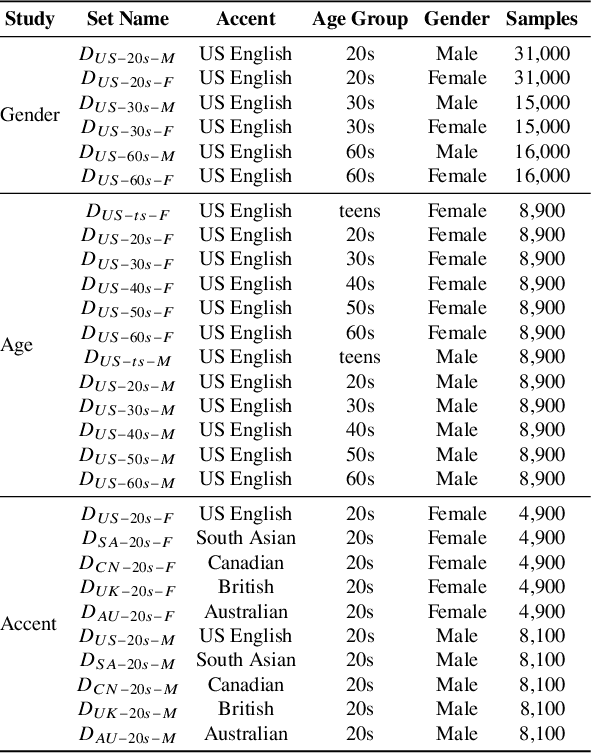
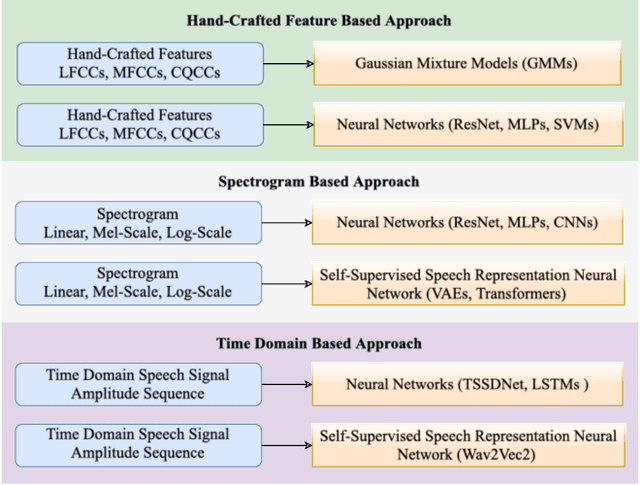
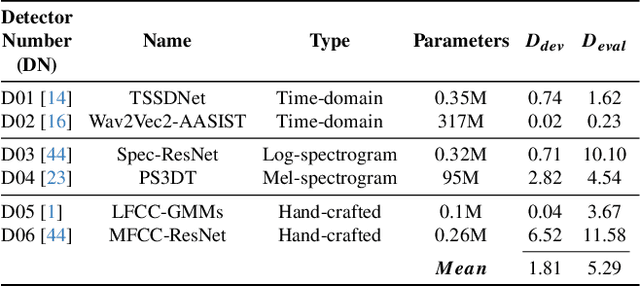
Abstract:Methods that can generate synthetic speech which is perceptually indistinguishable from speech recorded by a human speaker, are easily available. Several incidents report misuse of synthetic speech generated from these methods to commit fraud. To counter such misuse, many methods have been proposed to detect synthetic speech. Some of these detectors are more interpretable, can generalize to detect synthetic speech in the wild and are robust to noise. However, limited work has been done on understanding bias in these detectors. In this work, we examine bias in existing synthetic speech detectors to determine if they will unfairly target a particular gender, age and accent group. We also inspect whether these detectors will have a higher misclassification rate for bona fide speech from speech-impaired speakers w.r.t fluent speakers. Extensive experiments on 6 existing synthetic speech detectors using more than 0.9 million speech signals demonstrate that most detectors are gender, age and accent biased, and future work is needed to ensure fairness. To support future research, we release our evaluation dataset, models used in our study and source code at https://gitlab.com/viper-purdue/fairssd.
Compression Robust Synthetic Speech Detection Using Patched Spectrogram Transformer
Feb 22, 2024



Abstract:Many deep learning synthetic speech generation tools are readily available. The use of synthetic speech has caused financial fraud, impersonation of people, and misinformation to spread. For this reason forensic methods that can detect synthetic speech have been proposed. Existing methods often overfit on one dataset and their performance reduces substantially in practical scenarios such as detecting synthetic speech shared on social platforms. In this paper we propose, Patched Spectrogram Synthetic Speech Detection Transformer (PS3DT), a synthetic speech detector that converts a time domain speech signal to a mel-spectrogram and processes it in patches using a transformer neural network. We evaluate the detection performance of PS3DT on ASVspoof2019 dataset. Our experiments show that PS3DT performs well on ASVspoof2019 dataset compared to other approaches using spectrogram for synthetic speech detection. We also investigate generalization performance of PS3DT on In-the-Wild dataset. PS3DT generalizes well than several existing methods on detecting synthetic speech from an out-of-distribution dataset. We also evaluate robustness of PS3DT to detect telephone quality synthetic speech and synthetic speech shared on social platforms (compressed speech). PS3DT is robust to compression and can detect telephone quality synthetic speech better than several existing methods.
DSVAE: Interpretable Disentangled Representation for Synthetic Speech Detection
Apr 06, 2023
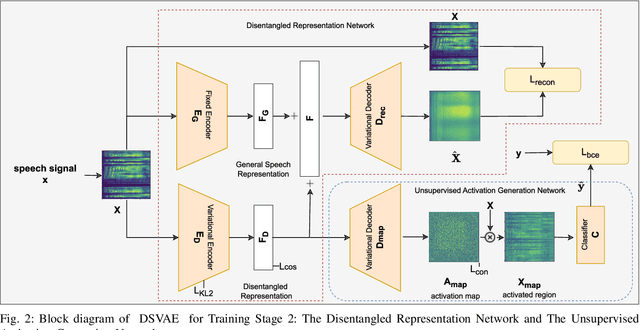


Abstract:Tools to generate high quality synthetic speech signal that is perceptually indistinguishable from speech recorded from human speakers are easily available. Several approaches have been proposed for detecting synthetic speech. Many of these approaches use deep learning methods as a black box without providing reasoning for the decisions they make. This limits the interpretability of these approaches. In this paper, we propose Disentangled Spectrogram Variational Auto Encoder (DSVAE) which is a two staged trained variational autoencoder that processes spectrograms of speech using disentangled representation learning to generate interpretable representations of a speech signal for detecting synthetic speech. DSVAE also creates an activation map to highlight the spectrogram regions that discriminate synthetic and bona fide human speech signals. We evaluated the representations obtained from DSVAE using the ASVspoof2019 dataset. Our experimental results show high accuracy (>98%) on detecting synthetic speech from 6 known and 10 out of 11 unknown speech synthesizers. We also visualize the representation obtained from DSVAE for 17 different speech synthesizers and verify that they are indeed interpretable and discriminate bona fide and synthetic speech from each of the synthesizers.
An Overview of Recent Work in Media Forensics: Methods and Threats
Apr 26, 2022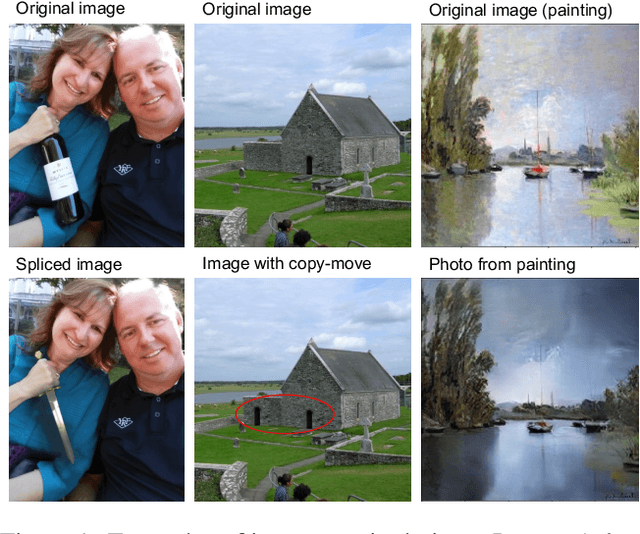
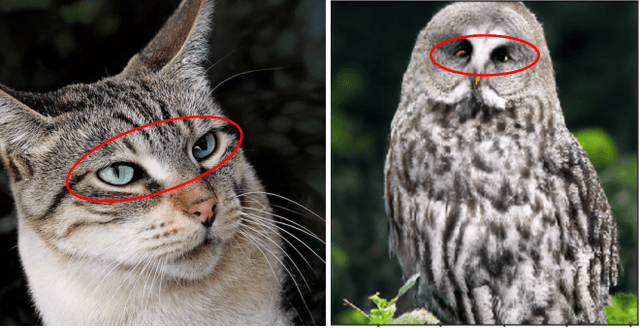
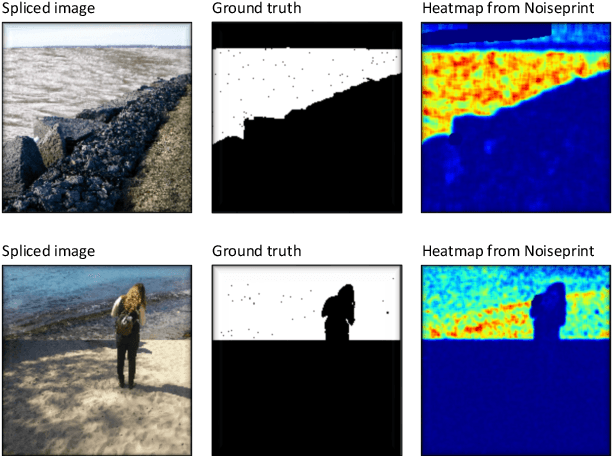
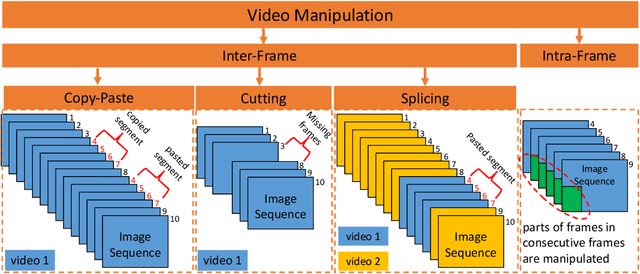
Abstract:In this paper, we review recent work in media forensics for digital images, video, audio (specifically speech), and documents. For each data modality, we discuss synthesis and manipulation techniques that can be used to create and modify digital media. We then review technological advancements for detecting and quantifying such manipulations. Finally, we consider open issues and suggest directions for future research.
 Add to Chrome
Add to Chrome Add to Firefox
Add to Firefox Add to Edge
Add to Edge